| |
|
Xiamen Oil Paintings, Wholesale Direct!
|
|
100% hand painted, 100% cotton canvas, 100% money back if not satisfaction. |
|
|
|
|
ART WORKS INDEX
A
B
C
D
E
F
G
H
I
J
K
L
M
N
O
P
Q
R
S
T
U
V
W
X
Y
Z
|
|
ARTISTS INDEX
A
B
C
D
E
F
G
H
I
J
K
L
M
N
O
P
Q
R
S
T
U
V
W
X
Y
Z
|
|
|
|
|
|
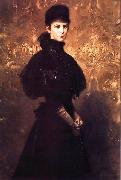 |
Gyula Benczur
|
|
Gyula Benczur (1844 - 1920) was a Hungarian painter and pedagogue. He won international success with his first few paintings, winning several competitions. He assisted Karl von Piloty with the frescoes of Maximilianeum and Rathaus in Munich. He also illustrated books by the great German writer, Friedrich Schiller. He was commissioned by the Bavarian king Ludwig II to paint Rococo themes. Later he was offered numerous international teaching positions, including offers in Prague and Weimar, but accepted a position in Munich, one of his most distinguished pupils being the Swiss-born American painter Adolfo Meller-Ury. Benczur was later a favorite among the Hungarian upper-class, painting numerous portraits of kings and aristocrats. He was considered a rival in historical painting to Makart. During his lifetime, Benczur won numerous awards. His self-portrait is on display at the Uffizi Gallery in Florence.
|
|
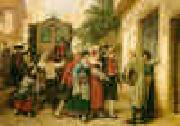 |
Gustave Brion
|
|
1824-1877 French
French painter and illustrator. His family settled in Strasbourg in 1831 and placed him in the studio of the portrait and history painter Gabriel-Christophe Gurin (1790-1846) in 1840. He then earned his living mainly by teaching drawing and copying paintings. In 1847 he successfully submitted his first work to the Salon: Farmhouse Interior at Dambach (untraced). In the summer of 1850 he moved to Paris, where he took a studio in a house shared by Realist artists. Brion exhibited regularly at the Salon: in 1852 The Towpath (untraced) was bought by the de Goncourt brothers; and in 1853 he showed the Potato Harvest during the Flooding of the Rhine in 1852 (Nantes, Mus. B.-A.), in which the influence of Gustave Courbet and Jean-Francois Millet (ii) can be seen in the Alsatian peasant figures.
|
|
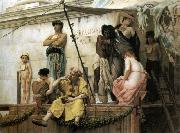 |
Gustave Boulanger
|
|
(1824-88) was a French figure painter known for his Neo-Grec style. He was born at Paris, studied with Delaroche and Jollivet, and in 1849 took the Prix de Rome. His paintings are prime examples of academic art of the time, particularly history painting. Boulanger had visited Italy, Greece, and North Africa, and his paintings reflect his attention to culturally correct details and skill in rendering the female form. His works include a Moorish Cafe (1848), Cæsar at the Rubicon (1865), the Promenade in the Street of Tombs, Pompeii (1869), and The Slave Market (1888). The recipient of many medals, he became a member of the Institut de France in 1882.
|
|
|
|
|
|
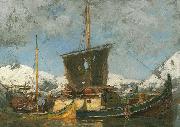 |
Gunnar Berg
|
|
(21 May 1863 - 23 December 1893) was a Norwegian painter, known for his paintings of his native Lofoten. He principally painted memorable scenes of the everyday life of the local fishermen.
Gunnar Berg was born on Svinøya in Svolvær on Lofoten, Nordland County, Norway. He was the oldest of 12 siblings born to a landlord and merchant, Lars Thodal Walnum Berg (1830-1903) and Lovise Johnsen (1842-1921). From 1875-81, he attended Cathedral School in Trondheim, and also took private lessons in drawing and painting by the artist H. J. Johannessen. He later attended a trade school in Bergen. He was first employed as a merchant. He later studied to became an artist.
|
|
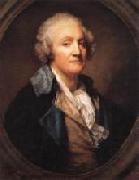 |
GREUZE, Jean-Baptiste
|
|
French Rococo Era Painter, 1725-1805
French painter and draughtsman. He was named an associate member of the Academie Royale de Peinture et de Sculpture, Paris, in 1755 on the strength of a group of paintings that included genre scenes, portraits and studies of expressive heads . These remained the essential subjects of his art for the next 50 years, except for a brief, concentrated and unsuccessful experiment with history painting in the late 1760s, which was to affect his later genre painting deeply. Though his art has often been compared with that of Jean-Simeon Chardin in particular and interpreted within the context of NEO-CLASSICISM in general, it stands so strikingly apart from the currents of its time that Greuze's accomplishments are best described, as they often were by the artist's contemporaries, as unique. He was greatly admired by connoisseurs, critics and the general public throughout most of his life. His pictures were in the collections of such noted connoisseurs as Ange-Laurent de La Live de Jully, Claude-Henri Watelet and Etienne-Francois, Duc de Choiseul. For a long period he was in particular favour with the critic Denis Diderot, who wrote about him in the Salon reviews that he published in Melchior Grimm's privately circulated Correspondance litt?raire. His reputation declined towards the end of his life and through the early part of the 19th century, to be revived after 1850, when 18th-century painting returned to favour, by such critics as Theophile Thore, Ars?ne Houssaye and, most notably, Edmond and Jules de Goncourt in their book L'Art du dix-huitieme siecle. By the end of the century Greuze's work, especially his many variations on the Head of a Girl, fetched record prices, and his Broken Pitcher (Paris, Louvre) was one of the most popular paintings in the Louvre. The advent of modernism in the early decades of the 20th century totally obliterated Greuze's reputation.
|
|
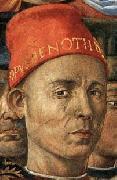 |
GOZZOLI, Benozzo
|
|
Italian Early Renaissance Painter, 1420-1497
Italian Renaissance painter. Early in his career he assisted Lorenzo Ghiberti on the east doors of the Baptistery in Florence and Fra Angelico on frescoes in Florence, Rome, and Orvieto. His reputation today rests on the breathtaking fresco cycle The Journey of the Magi (1459 C 61) in the chapel of Florence's Medici-Riccardi Palace. His work as a whole was undistinguished, however. He painted several altarpieces and a series of 25 frescoes of Old Testament scenes
|
|
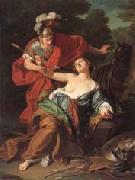 |
Giuseppe Bottani
|
|
Italian , Cremona 1717- Mantova 1784
was an Italian painter active in the Baroque period. He was born in Cremona. In Florence, he was a pupil of Vincenzo Meucci and il Puglieschi. He moved to Rome to work under Agostino Masucci, then he returned to Cremona after 1745. In 1769, he was named professor of painting and director of the Accademia di Belli Arti in Mantua. He was known for painting landscapes in the style of Gaspard Poussin, and figures in the style of Maratta. He painted a St. Paola taking leave of her Attendants as being in the church of SS. Cosmo e Damiano at Milan.
|
|
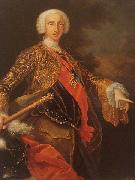 |
Giuseppe Bonito
|
|
Giuseppe Bonito (11 January 1707 - 9 May 1789) was a Neapolitan painter of the Rococo period. Giuseppe Bonito is known for genre depictions on canvas. Many of Gaspare Traversi's paintings had previously been attributed to Bonito.
Bonito was born at Castellammare di Stabia, and, like Traversi, was a student at the large studio of Francesco Solimena. Bonito represented urban scenes with folklore details and figures of commedia dell'arte. Between the 1736 and 1742 Bonito it worked for the family Borboni in the royal palace of Portici. He also painted portraits including one of Maria Amalia di Sassonia, wife of the Charles VII, king of Naples.
|
|
|
|
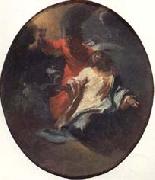 |
Giuseppe Bazzani
|
|
Italian Baroque Era Painter, 1690-1769
was an Italian painter of the Rococo. Born in Mantua to a goldsmith, Giovanni Bazzani, early on he apprenticed with the Parmesan painter Giovanni Canti (1653-1715). A fellow pupil was Francesco Maria Raineri. He spent most of his life in Mantua. From 1752, he was faculty, and from 1767, director of the Accademia di Belle Arti of Mantua. While esconced in a declining provincial city, he absorbed international influences. His loose brushstrokes, fervid often dark emotionalism, and tortured poses, which recall at times later expressionism, display stylistic tendencies more typical of Lombardy. Numerous artists, including Fetti, Bencovich, Rubens, and Magnasco are said to have influenced him, although the number and diversity of the artists suggested hints that he had an idiosyncratic and unique synthesis for his time. Among his early works are paintings of the Miracles of Pius V, the Conversion of a Heretic and the Healing of a Madwoman
|
|
|
|
|
|
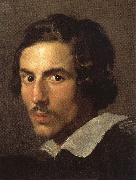 |
Giovanni Lorenzo Bernini
|
|
Italian Baroque sculptor, painter and architect.1598-1680
was a pre-eminent Baroque sculptor and architect of 17th Century Rome. Bernini was born in Naples to a Mannerist sculptor, Pietro Bernini, originally from Florence. At the age of seven he accompanied his father to Rome, where his father was involved in several high profile projects. There as a boy, his skill was soon noticed by the painter Annibale Carracci and by Pope Paul V, and Bernini gained the patronage exclusively under Cardinal Scipione Borghese, the pope's nephew.
|
|
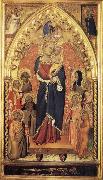 |
Giovanni del Biondo
|
|
Italian Gothic Era Painter, active 1356-1399,was a 14th century Italian painter of the Gothic and early-Renaissance period, active 1356-1399.
|
|
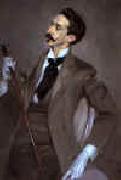 |
Giovanni Boldini
|
|
1842-1931
Italian
Giovanni Boldini Locations
Italian painter and printmaker. He received his earliest training from his father, the painter Antonio Boldini (1799-1872). From 1858 he may have attended courses given by Girolamo Domenichini (1813-91) and Giovanni Pagliarini (?1809-78) at the Civico Ateneo di Palazzo dei Diamanti, where he assiduously copied Old Masters. At 18 he was already known in Ferrara as an accomplished portrait painter. In 1862 he went to Florence, where he sporadically attended the Scuola del Nudo at the Accademia di Belle Arti. He frequented the Caffe Michelangiolo, a meeting-place of progressive artists, where he came into contact with the MACCHIAIOLI group of artists.
|
|
|
|
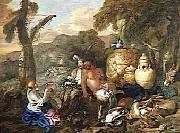 |
Giovanni Benedetto Castiglione
|
|
was an Italian Baroque artist, painter, printmaker and draftsman, of the Genoese school. He is best known now for his elaborate engravings, and as the inventor of the printmaking technique of monotyping. He was known as Il Grechetto in Italy and in France as Le Benedette.
|
|
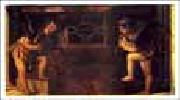 |
Giovanni Bellini
|
|
Italian High Renaissance Painter, ca.1430-1516
(b ?1431-6; d Venice, 29 Nov 1516). Painter and draughtsman, son of (1) Jacopo Bellini. Although the professional needs of his family background may have encouraged him to specialize at an early date in devotional painting, by the 1480s he had become a leading master in all types of painting practised in 15th-century Venice. Later, towards the end of his long life, he added the new genres of mythological painting and secular allegory to his repertory of subject-matter. His increasing dominance of Venetian art led to an enormous expansion of his workshop after c. 1490; and this provided the training-ground not only for his numerous shop-hands and imitators (generically known as Belliniani) but probably also for a number of major Venetian painters of the next generation. Throughout his career, Giovanni showed an extraordinary capacity for absorbing a wide range of artistic influences, both from within Venetian tradition and from outside. He also oversaw a technical revolution in the art of painting, involving the gradual abandonment of the traditional Italian use of egg tempera in favour of the technique of oil painting pioneered in the Netherlands. It was thanks to Giovanni Bellini that the Venetian school of painting was transformed during the later 15th century from one mainly of local significance to one with an international reputation. He thus set the stage for the triumphs of Venetian painting in the 16th century and for the central contribution that Venice was to make to the history of European art.
|
|
 |
Giovanni Battista Tiepolo
|
|
Italian Rococo Era Painter, 1696-1770
Giovanni Battista Tiepolo was born in Venice on March 5, 1696. His father, who was part owner of a ship, died when Tiepolo was scarcely a year old, but the family was left in comfortable circumstances. As a youth, he was apprenticed to Gregorio Lazzarini, a mediocre but fashionable painter known for his elaborately theatrical, rather grandiose compositions.
Tiepolo soon evolved a more spirited style of his own. By the time he was 20, he had exhibited his work independently, and won plaudits, at an exhibition held at the church of S. Rocco. The next year he became a member of the Fraglia, or painters guild. In 1719 he married Cecilia Guardi, whose brother Francesco was to become famous as a painter of the Venetian scene. They had nine children, among them Giovanni Domenico and Lorenzo Baldassare, who were also painters.
In the 1720s Tiepolo carried out many large-scale commissions on the northern Italian mainland. Of these the most important is the cycle of Old Testament scenes done for the patriarch of Aquileia, Daniele Dolfin, in the new Archbishop Palace at Udine. Here Tiepolo abandoned the dark hues that had characterized his early style and turned instead to the bright, sparkling colors that were to make him famous.
|
|
|
|
|
|
 |
Giovanni Battista Pittoni
|
|
Giambattista Pittoni (June 6, 1687-November 6, 1767) was an Italian painter of the late-Baroque or Rococo period, active mainly in his native Venice.
Pittoni was born in Venice, and studied painting under his uncle Francesco Pittoni and Antonio Balestra. Little is known of his early career. He entered the Venetian painters' guild in 1716. In 1722-1723, he was commissioned to paint eThe Torture of St Thomase for San Stae in Venice, which also contains one if his later works in its sacristy. He also completed the transit of Santa Maria in Organo in Verona in 1725. In 1727, he was appointed honorary Academician of the Accademia Clementina in Bologna. In subsequent years, Pittoni never left his native Venice, but completed a number of important and lucrative commissions from German, Polish, Russian, Italian and Austrian patrons, including eThe Sacrifice of Jephthah's daughtere for the Royal Palace of Turin, a number of works for the Marshal von Schulenburg, and a eMartyrdom of St Batholomewe for the Basilica of Saint Anthony of Padua. Pittoni came to be known for his "grand-manner" canvases depicting religious, historical, and mythological subjects (such as Sophonisba and Polyxena).
By 1740, he established a studio and residence in the San Giacomo district of Venice, and took on numerous apprentices. Pittoni died at age 80 on November 6, 1767. His tomb is at the church of San Giacomo dall'Orio in Venice.
Pittoni was a co-founder of the official painter's academy in Venice (in competition to the old fraglia or painter's guild), the Accademia di Belle Arti di Venezia, and he succeeded as President (1758-1761) his contemporary Giovanni Battista Tiepolo. His mature palette was noted, as was Tiepolo's, for his lightness of tone. Besides Tiepolo, Pittoni's influences were Giovanni Battista Piazzetta, Sebastiano Ricci, and Antonio Balestra. His paintings were of a Rococo style, but later became more sedate in their approach towards Neoclassicism.
|
|
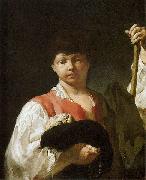 |
Giovanni Battista Piazzetta
|
|
(also called Giambattista Piazzetta or Giambattista Valentino Piazzetta) (February 13, 1682 or 1683 ?C April 28, 1754) was an Italian rococo painter of religious subjects and genre scenes.
Piazzetta was born in Venice, the son of a sculptor Giacomo Piazzetta, from whom he had early training in wood carving. Starting in 1697 he studied with the painter Antonio Molinari. By Piazzetta's account, he studied under Giuseppe Maria Crespi while living in Bologna in 1703-05, although there is no record by Crespi of formal tutelage. Piazzetta did find inspiration in Crespi's art, in which the chiaroscuro of Caravaggio was transformed into an idiom of graceful charm. He was also greatly impressed by the altarpieces created by another Bolognese painter of a half-century earlier, Guercino.
Around 1710, he returned to Venice. There he won recognition as a leading artist despite his limited output and his unassuming nature, but he ultimately was less patronized, both in Venice and especially abroad, than two other eminent stars in Venetian late-Baroque/Rococo, Ricci and Tiepolo. These two painters had a luminous palette and facile ease that allowed them to carpet meters of ceiling with frescoes, although with a superficiality and glamor that is absent from Piazzetta's darker and more intimate depictions. Nonetheless,Tiepolo, who collaborated with Piazzetta on some projects, was greatly influenced by the older artist; in turn, the luminosity and brilliance of Tiepolo's palette would influence Piazzetta in his later years.
Piazzetta created an art of warm, rich color and a mysterious poetry. He often depicted peasantry, even if often in a grand fashion. He was highly original in the intensity of color he sometimes used in his shadows, and in the otherworldly quality he gave to the light which throws part of a composition into relief. The gestures and glances of his protagonists hint at unseen dramas, as in one of his best-known paintings, The Soothsayer(1740, now in Gallerie dell'Accademia, Venice). He brought similar elusiveness to works of a religious nature, such as the Sotto in su Glory of St. Dominic in the Church of Santi Giovanni e Paolo.
Also notable are his many carefully rendered drawings of half-length figures or groups of heads. Usually in charcoal or black chalk with white heightening on gray paper, these are filled with the same spirit that animates his paintings, and were purchased by collectors as independent works. He also produced engravings.
In 1750 Piazzetta became the first director of the newly founded Scuola di Nudo, and he devoted himself in the last few years of his life to teaching. He was elected a member of the Bolognese Accademia Clementina in 1727. Among the painters in his studio were Domenico Maggiotto, Francesco Dagiu (il Capella), John Henry Tischbien the Elder, Egidio Dall'Oglio, and Antonio Marinetti.[1] Among younger painters who emulated his style are Giulia Lama, Federico Bencovich, and Francesco Polazzo (1683?C1753). He died in Venice in 1754.
|
|
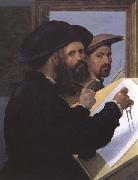 |
Giovanni Battista Paggi
|
|
Italian Baroque Era Painter, 1554-1627
Italian painter and theorist. As the son of a newly inscribed nobleman, he received a Renaissance gentleman's education, but as an artist he was it seems self-taught, despite the encouragement of Luca Cambiaso. The gentleman who then set up as a painter was obliged to give his work to patrons, sometimes expecting future remuneration; but when one patron reneged on payment in 1581, Paggi mortally wounded him and was banished from Genoa. He was given protection by Francesco I de' Medici, Grand Duke of Tuscany, and settled in Florence. A fresco of St Catherine Converting Two Criminals (1582), painted for Niccol? Gaddi's family chapel at S Maria Novella and thoroughly Florentine in manner, established Paggi's reputation at the Medici court. He painted ephemeral decorations, portraits (all untraced) and altarpieces for many Florentine churches and for the cathedrals of San Gimignano (c. 1590), Pistoia (1591-3) and Lucca (1597-8), having his studio in a house owned by Federico Zuccaro.
|
|
|
|
 |
Giovanni Battista Moroni
|
|
Italian
c1520-1578
was a North Italian painter of the Late Renaissance period. He is also called Giambattista Moroni. Best known for his elegantly realistic portraits of the local nobility and clergy, he is considered one of the great portrait painters of sixteenth century Italy.
The National Gallery (London) has one of the best collections of his work, including the celebrated portrait known as Il Sarto (The Tailor, a member of the Fenaroli family, illustration). Other portraits are found in the Uffizi (the Nobleman Pointing to Flame inscribed "Et quid volo nisi ut ardeat?"), Berlin Gallery, the Canon Ludovico de' Terzi and Moroni's self-portrait; and in the National Gallery, Washington, the seated half-figure of the Jesuit Ercole Tasso, traditionally called "Titian's Schoolmaster", although there is no real connection with Titian.
The Accademia Carrara (Bergamo) (Portrait of an old man). Ashmolean Museum (University of Oxford), Brooks Museum of Art (Memphis, Tennessee), Detroit Institute of Arts, the Fine Arts Museums of San Francisco, the Hermitage Museum, the Honolulu Academy of Arts, Kunsthistorisches Museum (Vienna), the Liechtenstein Museum (Vienna), the Musee du Louvre, Mus??e Cond?? Chantilly (Chantilly, France), Museo Poldi Pezzoli (Milan), the Museum of Fine Arts, Boston, National Galleries of Scotland, the National Gallery of Art (Washington D.C.), the National Gallery of Australia, the National Gallery of Canada, the National Gallery, London, the Norton Simon Museum (Pasadena, California), Pinacoteca Ambrosiana (Milan), Pinacoteca di Brera (Milan), Rijksmuseum, the Ringling Museum of Art (Florida), Studio Esseci (Padua, Italy), University of Arizona Museum of Art, Virginia Museum of Fine Arts and the Uffizi (Portrait of Giovanni Antonio Pantera) are among the public collections holding works by Giovanni Battista Moroni.
|
|
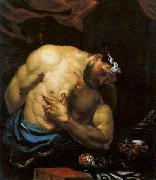 |
Giovanni Battista Langetti
|
|
Giovanni Battista Langetti (1625 - 1676), also known as Giambattista Langetti, was an Italian late-Baroque painter. He was active in his native Genoa, then Rome, and finally for the longest period in Venice.
He first trained with Assereto, then Pietro da Cortona, but afterwards studied under Giovanni Francesco Cassana, appeared in Venice by 1650s were he worked in a striking Caravaggesque style. He is thought to have influenced Johann Karl Loth and Antonio Zanchi. He painted many historical busts for private patrons in the Venetian territory and in Lombardy. He died at Venice in 1676.
|
|
|
|
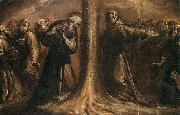 |
Giovanni Battista Crespi
|
|
Giovanni Battista Crespi (23 December 1573 - 23 October 1632), called Il Cerano, was an Italian painter, sculptor, and architect.
He was born in Romagnano Sesia, the son of a painter, Raffaele Crespi, and moved to Cerano with his family some years later. In 1591 he is known to have been living in Milan.
True to the Counter-Reformation piety zealously expressed in Milanese art of his time, his paintings focus on mysteries and mystical episodes in saintly life. The crowded canvases and the angles recall Mannerism, but his paintings show an emotion that evokes common sentiments in Baroque art. Along with other artists, he completed a series of paintings (Quadroni of St. Charles) of the life of St. Charles Borromeo[1] for the Duomo of Milan, an altarpiece with the Baptism of St. Augustine for San Marco (Milan), and a Mass of St. Gregory for the Basilica of San Vittore in Varese (1615-17). Also see the nightmarish, St. Gregory Delivers the Soul of a Monk (1617), also in San Vittore.
|
|
|
|
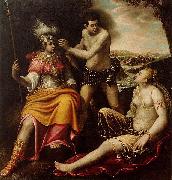 |
Giovanni Baglione
|
|
(1566 - 30 December 1643) was an Italian Late Mannerist and Early Baroque painter and art historian. He is best remembered for his acrimonious involvement with the artist Caravaggio and his writings concerning the other Roman artists of his time.
A pupil of Francesco Morelli, he worked mainly in Rome, initially with a late-Mannerist style. He was also nicknamed Il Sordo del Barozzo.
|
|
 |
Giovanni Antonio Boltraffio
|
|
was an Italian painter of the High Renaissance from Lombardy, who worked in the studio of Leonardo da Vinci.[2] Boltraffio and Bernardino Luini are the strongest artistic personalities to emerge from Leonardo's studio. According to Giorgio Vasari, he was of an aristocratic family and was born in Milan.
His major painting of the 1490s is the Resurrection (painted with fellow da Vinci pupil Marco d'Oggiono and now in the Gemäldegalerie, Berlin). A Madonna and Child in the Museo Poldi Pezzoli of Milan, is one of the high points of the Lombard Quattrocento.
His portraits, often in profile, and his half-length renderings of the Madonna and Child are Leonardesque in conception, though the clean hard edges of his outlines lack Leonardo's sfumato.
In Bologna, where he remained in 1500-1502, he found sympathetic patrons in the Casio family, of whom he painted several portraits and for whom he produced his masterwork, the Pala Casio for the Church of the Misericordia (Louvre Museum); it depicts a Madonna and Child with John the Baptist and Saint Sebastian and two Kneeling Donors, Giacomo Marchione de' Pandolfi da Casio and his son, the Bolognese poet Girolamo Casio[3], who mentioned Boltraffio in some of his sonnets. Boltraffio's portrait of Girolamo Casio is at the Pinacoteca di Brera, Milan.
|
|
|
|
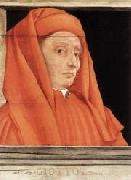 |
GIOTTO di Bondone
|
|
Italian Early Renaissance Painter, 1267-1337
Italian painter and designer. In his own time and place he had an unrivalled reputation as the best painter and as an innovator, superior to all his predecessors, and he became the first post-Classical artist whose fame extended beyond his lifetime and native city. This was partly the consequence of the rich literary culture of two of the cities where he worked, Padua and Florence. Writing on art in Florence was pioneered by gifted authors and, although not quite art criticism, it involved the comparison of local artists in terms of quality. The most famous single appreciation is found in Dante's verses (Purgatory x) of 1315 or earlier. Exemplifying the transience of fame, first with poets and manuscript illuminators, Dante then remarked that the fame of Cimabue, who had supposed himself to be the leader in painting, had now been displaced by Giotto. Ironically, this text was one factor that forestalled the similar eclipse of Giotto's fame, which was clearly implied by the poet.
|
|
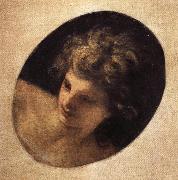 |
Gian Lorenzo Bernini
|
|
Italian sculptor , b. 1598, Napoli, d. 1680, Roma
,Italian architect and artist credited with creating the Baroque style of sculpture. He began his career working for his father, a sculptor. Among his early sculptures are Apollo and Daphne (1622 -C 24) and an active David (1623 -C 24). Under the patronage of Urban VIII, the first of eight popes he was to serve, he created the baldachin over the tomb of St. Peter in Rome. Bernini's architectural duties increased after 1629, when he was appointed architect of St. Peter's Basilica and the Palazzo Barberini. His works often represent a fusion of architecture and sculpture, as in the Cornaro Chapel, in Santa Maria della Vittoria, Rome, with its celebrated theatrical sculpture, The Ecstasy of St. Teresa (1645 C 52). His greatest architectural achievement is the colonnade enclosing the piazza before St. Peter's.
|
|
|
|
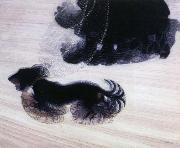 |
giacomo balla
|
|
Balla is often portrayed as a painter closely associated with Italian Futurism although in fact, like a number of others associated with the group, his work crossed into a number of creative disciplines including fashion and the applied arts. In 1914 he wrote the Manifesto on Menswear, later retitled Antineutral Clothing, a dramatic exhortation to dispense with the mundaneity of everyday menswear in favour of dynamic, expressive, and aggressive Futurist clothing. Like his fellow Futurists he sought to sweep away all vestiges of Italy cultural heritage in favour of an emphatically 20th-century way of life. He conceived of Futurist menswear as allowing its wearers to respond to mood changes through pneumatic devices that can be used on the spur of the moment, thus everyone can alter his dress according to the needs of his spirit. It could also be animated by electric bulbs. He had an exhibition at the Casa DArte Bragaglia in Rome in 1918, in conjunction with which he co-published his Colour Manifesto. He was also committed to Futurist applied arts and furniture, brightly painted and with richly animated surfaces, and showed them at his Futurist House in 1920, the year in which he collaborated on the journal Roma futurista. He also exhibited at the Paris Exposition des Arts D??coratifs et Industriels of 1925 and the International Exhibition at Barcelona in 1929. However he failed to get his Futurist designs put into mass production and during the 1930s gradually distanced himself from such an outlook.
|
|
|
|
|
|
|
|
|
|
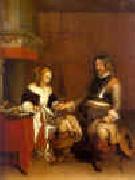 |
Gerard Ter Borch
|
|
1617-1681
Dutch
Gerard Ter Borch Locations
Gerard Ter Borch was born in Zwolle. His first teacher was his father, Gerard Ter Borch the Elder, who in his youth had spent some years in Rome and returned with drawings he had made as well as some he had collected in Italy. The son precociously revealed his gifts as a draftsman, as shown in his drawing of a man on horseback (1625).
Ter Borch traveled widely. In 1634 he was in Haarlem, in 1635 in London, in 1640 probably in Rome. A visit to Spain is reflected in reminiscences of Diego Velazquez in the style and psychological penetration of Ter Borch s portraits. His famous portrait Helena van der Schalke as a Child (ca. 1644) calls to mind Velazquez s Infantas; the placement of the figure in palpable yet undefined space, without the indication of a floor line, is a masterful adoption of the Spanish masters invention.
Between 1645 and 1648 Ter Borch was in Munster, Germany, where he went to seek portrait commissions during the meetings that ended the 80 years of war between the United Provinces and Spain. His small group portrait Swearing of the Oath of Ratification of the Treaty of Munster is a rare example in Dutch 17th-century painting of the recording of an actual historical event. It includes more than 50 recognizable portraits. The painter asked for this work the enormous price of 6, 000 guilders. Apparently no buyer was found, for the picture was in the hands of his widow after his death. From 1654 on Ter Borch lived mainly in Deventer, where he married, became a citizen, held honorary office, and died on Dec. 8, 1681.
Ter Borch s early paintings were mainly scenes of military life, painted with great subtlety of color and values. Later he showed a predilection for small, dainty interior scenes, in which he revealed his delight in the sheen of satin and the grace of charming women. The elegance of his figures has tended to obscure the fact that in many cases they are shown as participants in situations of amatory commerce. The figures and costumes are painted with care and high finish that is not matched in the settings and backgrounds, which are often not well realized. The Music Lesson (ca. 1675) is a characteristic late example of Ter Borchs favorite subject matter. His most able pupil, Caspar Netscher, became a successful portraitist in the small-scale and fashionable tradition of his master.
|
|
|
|
|
|
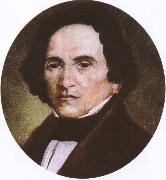 |
georges bizet
|
|
Born: Oct 25, 1838 in Paris, France
Died: Jun 03, 1875 in Bougival, France
Active: '30s, '50s, '70s-2000s
Major Genres: Music, Theater
Career Highlights: Carmen, Carmen Jones, Carmen
First Major Screen Credit: The Burlesque on Carmen (1916)
|
|
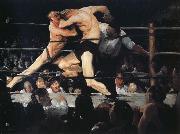 |
George Wesley Bellows
|
|
American Ashcan School Painter, 1882-1925
American painter and lithographer. He was the son of George Bellows, an architect and building contractor. He displayed a talent for drawing and for athletics at an early age. In 1901 he entered Ohio State University, where he contributed drawings to the school yearbook and played on both the basketball and baseball teams. In spring of his third year he withdrew from university to play semi-professional baseball until the end of summer 1904
|
|
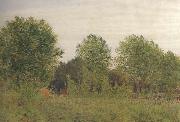 |
George Price Boyce.RWS
|
|
1826-1897
English painter. He was the son of a prosperous wine merchant and pawnbroker. His childhood was spent in London, and in 1846 he was apprenticed to the firm of architects Wyatt & Brandon, where he remained for three years. He was always fascinated by ancient buildings but gradually lost interest in architecture as a career. In 1849, perhaps as a result of meeting David Cox at Betws-y-Coed (Gwynedd, Wales), he decided to become a painter. In the early 1850s Boyce drew landscape and architectural subjects with a fluent watercolour technique derived from Cox. In 1854 Boyce made an extended journey to Italy; he painted views of buildings in Venice and Verona, which were commended by Ruskin, and semi-abstract twilight studies
|
|
|
|
|
|
|
|
|
| Wholesale China Oil Painting Wholesale Oil Painting China Xiamen Portrait Reproduction on canvas Chinese Oil Painting Wholesale USA Oil Painting |
|
|
|
|
|